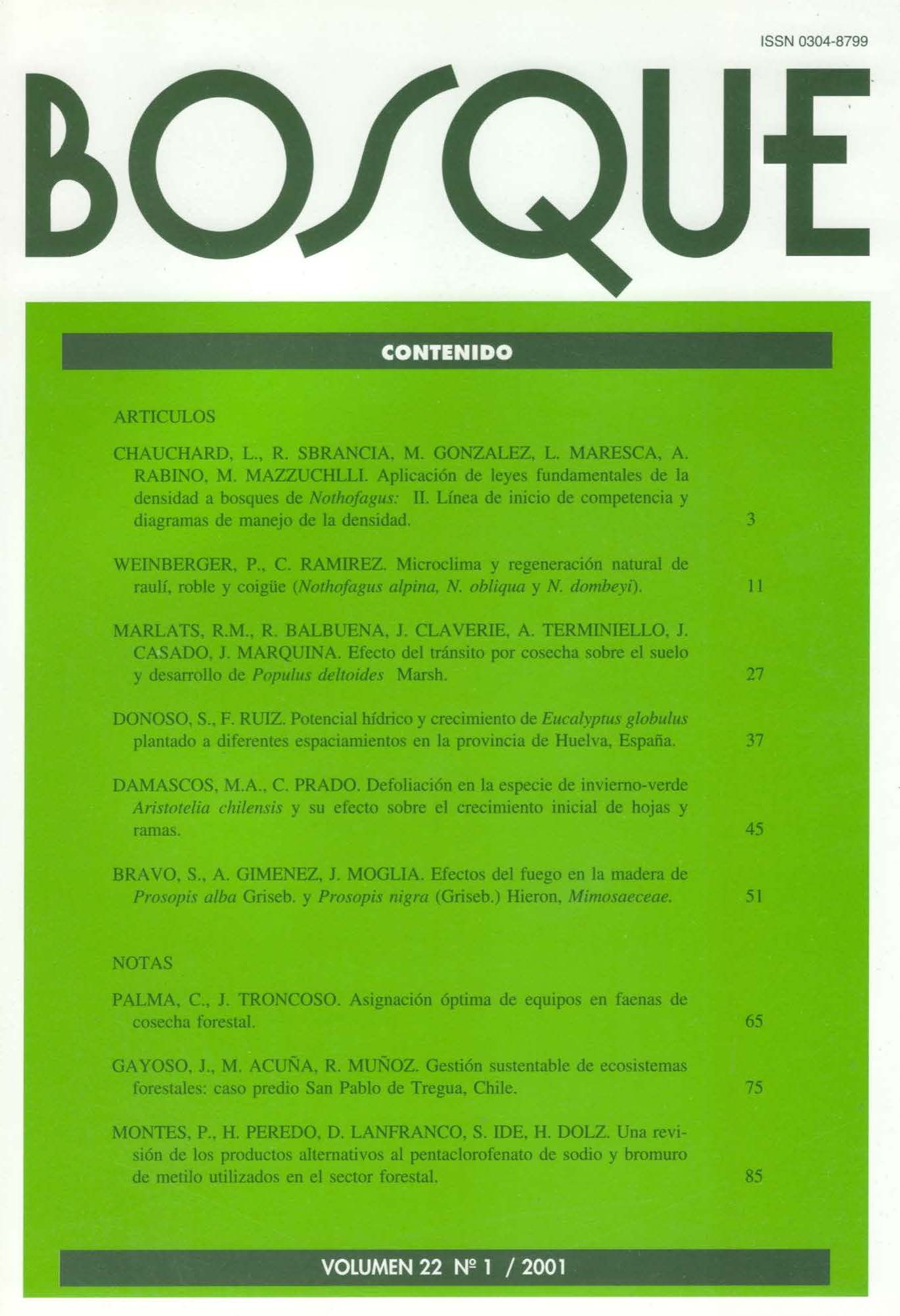Sustainable management of forest ecosystems: San Pablo de Tregua Case Study, Southern Chile
Main Article Content
Abstract
Sustainable forestry supports for leading a multi-purpose project in San Pablo de Tregua forest, located in 10t h Region, Chile, are proposed. The problem is solved by a baseline analysis of physical, biological, social information, forest resources, a potential uses discussion, the identification of homogeneous zones, the economic assessment for different intensities of harvesting and an environmental assessment of different settings under analysis.
Essentially, threshold values were built for the different use options. The options consisted of one-use units and multi-purpose units considering wood production, hydrological cycle regulation, soil and water conservation, carbon sequestration, biodiversity conservation, recreation, and research.
According to financial assessment, at least 27% of the area needs to be harvested to cover the investment and operating costs. Likewise, according to environmental assessment, it is possible to harvest up to 70% of the productive area and maintain a very low impact. The integrated analysis shows that the project is feasible from an economical and environmental viewpoint by keeping a forest cover between 30% and 73% of the area.

